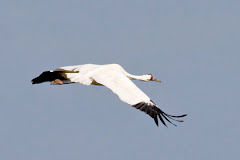
Photo above: This Trumpeter Swan Cygnet (youngster) sustained a back injury from an unspecified source. He is recovering well and gets to swim in the tub multiple times per day. It is essential for young swans to get regular exercise in the water to strengthen their swimming muscles and help waterproof their feathers. In this photo he is shown after having fallen asleep one evening. I don't think I've ever looked this comfortable in my life! The little guy in the background is a Mallard duckling that was keeping him company for a short time. (Photo credit: Marge Gibson)
Photo above: Do you know where your pet is right now? This baby Green Heron was carried away from home by a dog. This time of year, it is critical to keep your pets leashed and under control because baby animal’s lives count on it. We see countless patients per year that have been injured and misplaced by domestic animals and even the kindest pets can injure a young animal by mistake. This Green Heron was also initially confused for a Great Blue Heron by the folks that rescued him from their dog; an easy mistake for someone who is unfamiliar with Green Herons. Green Herons are a small species of heron in Wisconsin, much smaller than Great Blue Herons, and have bright yellow legs, a pointed spear-like beak, a long neck, although it is typically tucked down so it looks short, and beautiful greens, purples, and blues in their feathers. Lovely little herons. This little fellow survived with minor bruises and will be hand raised here until he is ready to go back into the wild.
Photo above: This tiny American Kestrel was found as an orphan and is now in the good hands of our rehabilitation staff here at REGI.
Photo above: These seven (YES SEVEN!) young Belted Kingfishers were found when their nest was destroyed on a construction site. Kingfishers are a real challenge to raise in captivity, because every bit of food provided to them has to be put into their mouths by our rehabbers. Luckily for us, these birds are fairly old for being babies, and should not have to stay with us for quite as long as a new hatchling would.
Photo above: This teeny tiny Turkey Vulture was found as an orphan in MN and is one of the littlest baby vultures we have ever had as a patient. As you can see, his whole body fits in my little hand. Young Turkey Vultures hatch as helpless little creatures with white fluff and black faces; very different from their parent’s shiny brown feathers and lovely red heads.
Photo above: This baby Red-shouldered Hawk was found as an orphan with a broken leg. A broken leg at this age is a bad situation, but he has been giving us hope; the other day he was found standing.
Photo above: This baby Red-tailed Hawk was also found as an orphan and is growing very fast. She is currently in with a foster parent to avoid imprinting on humans. Even at this age, you can see the intelligence behind those beautiful eyes.

Photo above: These darling little fluffballs have been keeping each other company. The baby in the back is a Wild Turkey chick and the baby in the front is a Ruffed Grouse chick. They are similar in size now, but soon the turkey will tower over the small grouse. (Photo credit: Marge Gibson)
Photo above: Here is another photo of the baby Ruffed Grouse. This is one of the cutest babies I have ever seen!
Photo above: This adult female Ruby-throated Hummingbird was admitted unable to fly. In addition to a wing injury, she may possibly be weakened from organophosphate poisoning.
Photo above: This gorgeous adult Common Loon was rescued by another rehabber in the Northwoods. The wonderful folks from Wild Instincts rescued her and found that she had a nasty fish hook embedded in her wing. They removed the hook and transferred her to us for care. She is doing much better now that she is hook-free. We are never "happy" that a patient is with us because that means they aren’t in the wild living their lives like they normally would, but it is a real treat to see an adult loon in her breeding plumage. Loons are definitely some of the most beautiful waterfowl in Wisconsin.
In addition to all of these patents that I just shared with you, we currently have many, many other babies. The numbers are always increasing, but at last count we have around 15 American Robins, 6 Mourning Doves, 3 Common Grackles, 4 Chipping sparrows, 4 Great Horned Owls, 6 baby Bald Eagles, a few other passerines (song birds) here and there, and well over a dozen water fowl of species ranging from Mallards, Wood ducks and Mergansers. Plus there are many adult Bald Eagles, Red-tailed Hawks, and other species in our clinic that I haven't even mentioned. Needless to say, we are busy, busy, busy!
As always, we are in need of volunteers, and any way that you can help us is appreciated!
Thanks everyone!
Karissa Mohr
Wildlife Educator











